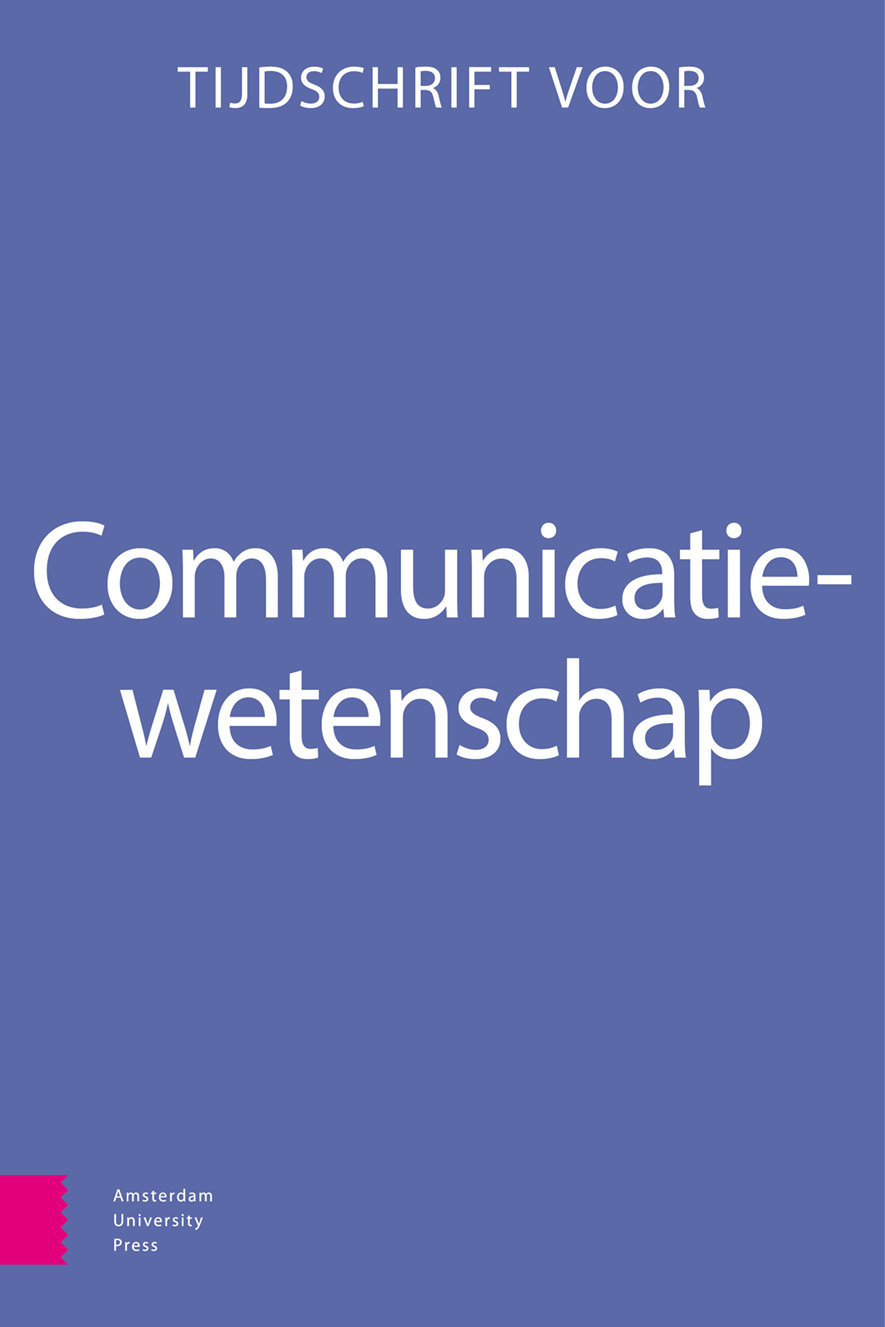-
oa Summaries
- Amsterdam University Press
- Source: Tijdschrift voor Communicatiewetenschap, Volume 46, Issue 3, sep. 2018,
- Vorig Artikel
- Inhoudsopgave
- Volgend Artikel
Samenvatting
Is support for television drama necessary in small media markets? An analysis and evaluation of support measures in Flanders.
This article analyses support for television drama in Flanders, against the backdrop of small media markets’ fragility and increased pressure on the sustainability of small media ecosystems due to shifted revenue models. The article questions to what extent the Flemish Media Fund and investment obligations for distributors have encouraged TV drama production, and have contributed to the industry’s sustainability. It furthermore questions to what extent existing support measures are part of a coherent audio-visual policy in Flanders. The findings are based on an analysis of supported projects, budgetary analysis of all Flemish TV series broadcasted between 2009 and 2017, and additional interviews with industry professionals in Flanders.
Keywords: small media markets, Flemish Media Fund, television drama, audio-visual policy
, Mark VerheydenInternal communication and the unrealized dialogic potential of social media
According to the excellence theory, which is still a dominant normative framework in public relations today, communication professionals should strive for two-way symmetrical interactions with their interlocutors. In the past, such interactions were severely complicated by the lack of suitable tools. Social media, known to afford interactivity, appear to offer the solution to this problem. However, research has shown that social media are predominantly used to push content. In order to understand why this is the case, we decided to study the perceptions of ‘knowledgeable outsiders’. More specifically, we organized a series of in-depth interviews with human resources executives in which we asked them about the impact of social media on internal communication, a sub-discipline within public relations. While these executives welcomed the interactive potential of social media, this interactive potential was not seen as the sole prerogative of professional communicators. Furthermore, they believed that the current approach of internal communicators towards social media, which is still very much focused on the use of social media as extra channels through which to ‘push’ content, is partially the reason why the dialogic potential of the latter is still largely unrealized.
Keywords: excellence theory, public relations, social media, human resources executives, in-depth interviews
, Anne Vlaanderen, Doeschka Anschütz & Rebecca de LeeuwThe influence of Disney movies on prosocial intentions among children
This study investigated the effects of the Disney movie Finding Nemo on the intention to perform prosocial behavior among children. Moderators that were taken into account were closeness of friendships and the amount of friendships children have. In this study, 270 children aged eight to ten years old participated. Findings revealed no significant relation between watching Finding Nemo and the intention to perform prososocial behavior, however results did show a significant positive effect that close friendships among children have on the intention to perform prosocial behavior.
Keywords: Disney movies, prosocial behavior, friendships, experiment, Finding Nemo
, Thomas Frissen, Tomas Coppens, Lennart Tobback & Leen d’HaenensFrom worrying about terror to being convinced of the ‘Muslim danger’. A cross-sectional investigation of the association between exposure to terrorism news coverage, terrorism catastrophizing, and threat related attitudes towards Muslims
News media coverage of terrorist acts has often been considered to be sensational, unbalanced, and stereotypical. Studies have shown that in the cases of Islamist-inspired terrorist acts, news media advance ‘Muslims are dangerous’-stereotypes. It has been speculated that exposure to these sensational and stereotypical messages could affect a tendency to being overly cognitively preoccupied with the terrorist threat, i.e. terrorism catastrophizing. Subsequently, being overly cognitively preoccupied with the terrorist threat might be associated with an increased perceived threat towards Muslims. The current study set out to bring these speculations to the test by means of a cross-sectional survey study among secondary school students in Belgium (n = 708). Quantitative data analyses showed that exposure to terrorist news coverage was indeed associated with higher levels of terrorism catastrophizing, which in turn was associated with significant higher levels of perceived realistic and symbolic threat towards Muslims. Limitations and implications of the study are discussed.
Keywords: terrorism news coverage, anti-muslim stereotypes, threat perceptions, integrated threat theory, media skepticism
]

